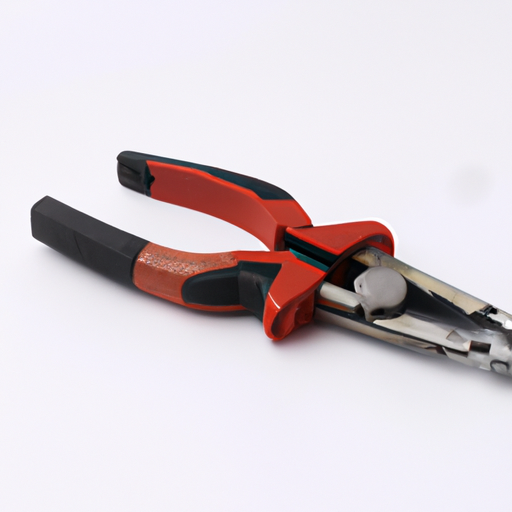
Cutting tools are essential instruments used in various industries for shaping, cutting, and removing material from a workpiece. These tools come in a wide range of shapes, sizes, and materials, each designed for specific applications and materials. From simple hand tools like knives and scissors to complex machinery like milling machines and laser cutters, cutting tools play a crucial role in manufacturing, construction, and other fields.

There are several types of cutting tools, each designed for specific applications and materials. Some common types of cutting tools include:
1. Hand tools: Hand tools like knives, scissors, and saws are used for cutting and shaping materials by hand. These tools are often used in woodworking, crafting, and other manual tasks.
2. Machine tools: Machine tools are power-operated tools that are used for cutting, shaping, and finishing materials. Examples of machine tools include lathes, milling machines, and grinders.
3. Cutting inserts: Cutting inserts are replaceable cutting tips that are used in machining operations. These inserts are made from materials like carbide, ceramic, and diamond and are designed to withstand high temperatures and pressures.
4. Abrasive tools: Abrasive tools like grinding wheels and sandpaper are used for cutting and shaping materials through abrasion. These tools are often used in metalworking, woodworking, and other industries.
5. Laser cutters: Laser cutters use a high-powered laser beam to cut through materials like metal, plastic, and wood. These machines are used in industries like automotive, aerospace, and electronics for precision cutting and engraving.
Cutting tools are made from a variety of materials, including high-speed steel, carbide, ceramic, and diamond. The choice of material depends on the application, the material being cut, and the desired cutting speed and precision. For example, high-speed steel is commonly used for cutting tools that require high cutting speeds and temperatures, while carbide is used for tools that need to withstand high wear and abrasion.
In addition to the material, the design of a cutting tool also plays a crucial role in its performance. Factors like the cutting edge geometry, rake angle, and clearance angle can affect the tool's cutting efficiency, chip formation, and tool life. Manufacturers use advanced technologies like computer-aided design (CAD) and computer-aided manufacturing (CAM) to optimize the design of cutting tools for specific applications.
Maintaining cutting tools is essential to ensure their performance and longevity. Proper maintenance includes regular sharpening, cleaning, and lubrication to prevent wear and damage. Additionally, operators should follow safety guidelines when using cutting tools to prevent accidents and injuries.
In conclusion, cutting tools are essential instruments used in various industries for shaping, cutting, and removing material from workpieces. These tools come in a wide range of types and materials, each designed for specific applications and materials. From simple hand tools to complex machinery, cutting tools play a crucial role in manufacturing, construction, and other fields. By understanding the different types of cutting tools, materials, and designs, manufacturers can choose the right tool for their specific application and achieve optimal cutting performance.
Cutting tools are essential instruments used in various industries for shaping, cutting, and removing material from a workpiece. These tools come in a wide range of shapes, sizes, and materials, each designed for specific applications and materials. From simple hand tools like knives and scissors to complex machinery like milling machines and laser cutters, cutting tools play a crucial role in manufacturing, construction, and other fields.

There are several types of cutting tools, each designed for specific applications and materials. Some common types of cutting tools include:
1. Hand tools: Hand tools like knives, scissors, and saws are used for cutting and shaping materials by hand. These tools are often used in woodworking, crafting, and other manual tasks.
2. Machine tools: Machine tools are power-operated tools that are used for cutting, shaping, and finishing materials. Examples of machine tools include lathes, milling machines, and grinders.
3. Cutting inserts: Cutting inserts are replaceable cutting tips that are used in machining operations. These inserts are made from materials like carbide, ceramic, and diamond and are designed to withstand high temperatures and pressures.
4. Abrasive tools: Abrasive tools like grinding wheels and sandpaper are used for cutting and shaping materials through abrasion. These tools are often used in metalworking, woodworking, and other industries.
5. Laser cutters: Laser cutters use a high-powered laser beam to cut through materials like metal, plastic, and wood. These machines are used in industries like automotive, aerospace, and electronics for precision cutting and engraving.
Cutting tools are made from a variety of materials, including high-speed steel, carbide, ceramic, and diamond. The choice of material depends on the application, the material being cut, and the desired cutting speed and precision. For example, high-speed steel is commonly used for cutting tools that require high cutting speeds and temperatures, while carbide is used for tools that need to withstand high wear and abrasion.
In addition to the material, the design of a cutting tool also plays a crucial role in its performance. Factors like the cutting edge geometry, rake angle, and clearance angle can affect the tool's cutting efficiency, chip formation, and tool life. Manufacturers use advanced technologies like computer-aided design (CAD) and computer-aided manufacturing (CAM) to optimize the design of cutting tools for specific applications.
Maintaining cutting tools is essential to ensure their performance and longevity. Proper maintenance includes regular sharpening, cleaning, and lubrication to prevent wear and damage. Additionally, operators should follow safety guidelines when using cutting tools to prevent accidents and injuries.
In conclusion, cutting tools are essential instruments used in various industries for shaping, cutting, and removing material from workpieces. These tools come in a wide range of types and materials, each designed for specific applications and materials. From simple hand tools to complex machinery, cutting tools play a crucial role in manufacturing, construction, and other fields. By understanding the different types of cutting tools, materials, and designs, manufacturers can choose the right tool for their specific application and achieve optimal cutting performance.